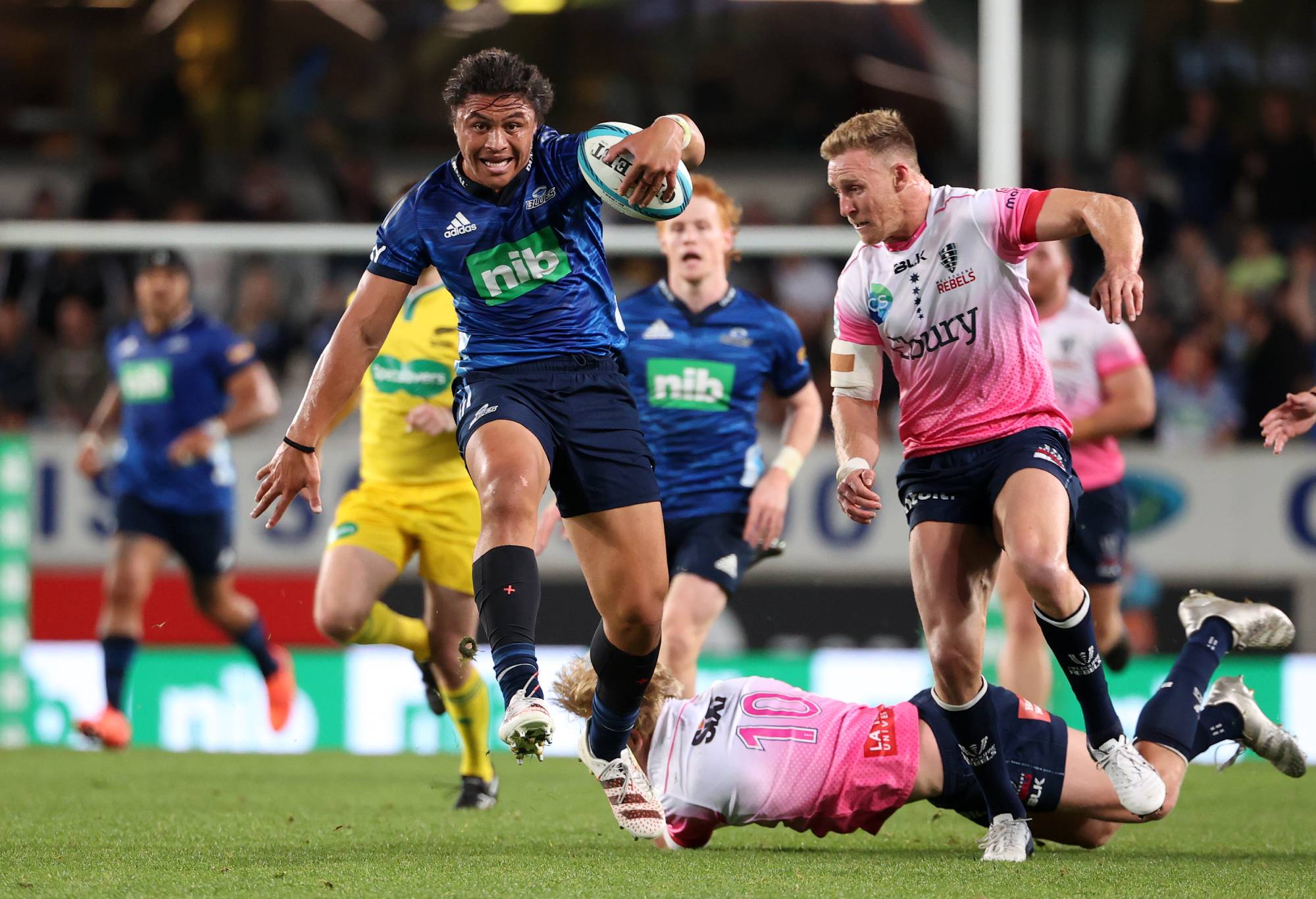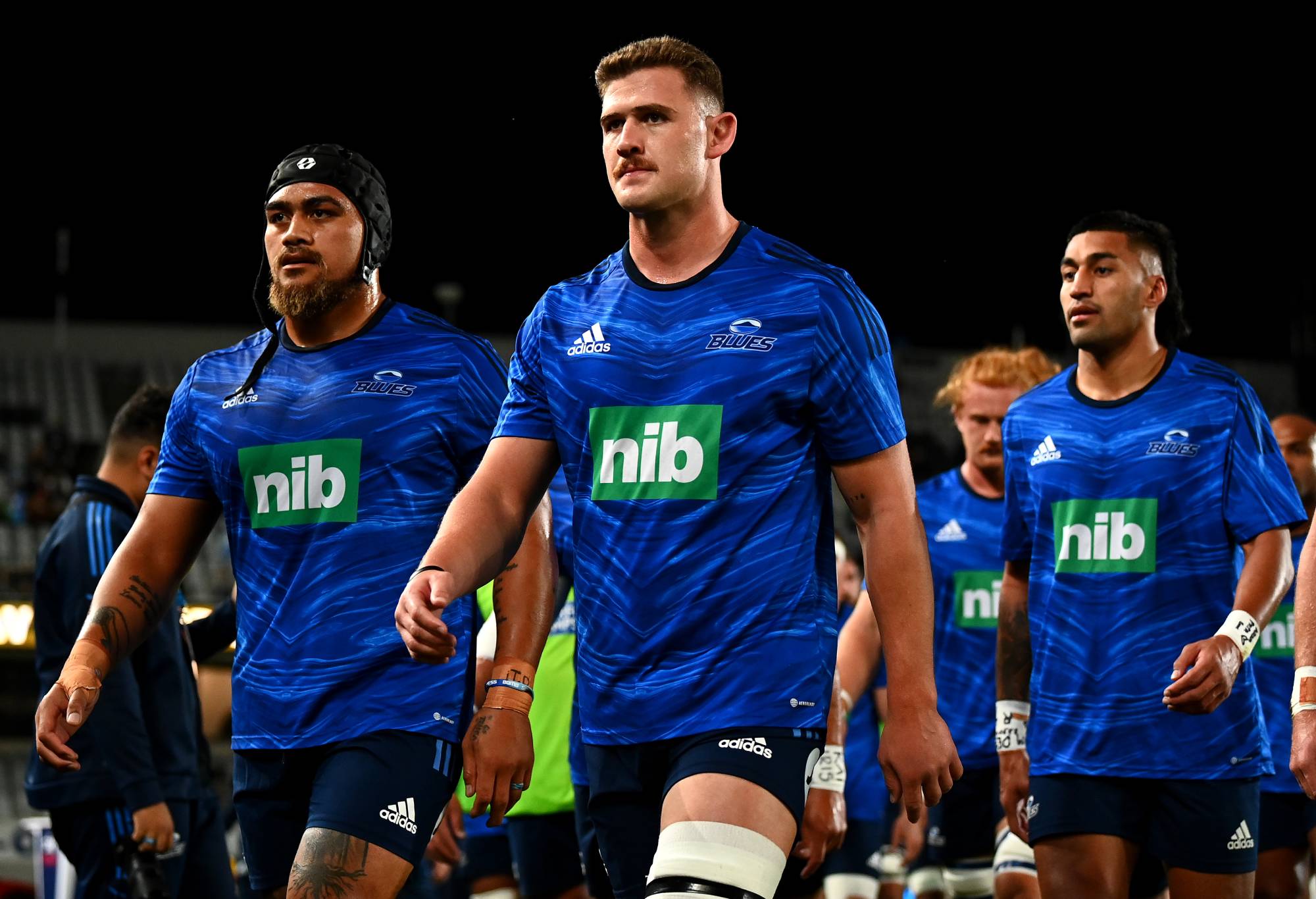Until their 2021 victory in Super Rugby Trans-Tasman, the Auckland Blues were the ugly duckling of New Zealand’s Super Rugby teams.
Maybe it’s the fact that for six years, they came dead last in New Zealand conferences despite being from the largest city in the country. Maybe it’s because we are coming up on 21 years since they last lifted the full-season trophy.
However, the progression of the side during Leon McDonald’s tenure saw them go from laughing stocks to grand finalists, with only the Crusaders standing between them and that elusive drought-breaking title.
This year, the Blues are one of the Kiwi sides facing the heaviest amount of change, with a new coach, a new generation of players and one of the toughest runs of any team in the competition.
Watch every match of Super Rugby Pacific ad-free, live & on demand on the Home of Rugby, Stan Sport
The arrival of Vern Cotter, one of the most exciting coaches worldwide, is a huge grab for the team.
The Blues have a lot of positives going for them. But are there enough for them to be in the mix for the Super Rugby title?
2024 Summary
On top of saying goodbye to McDonald in 2024, Auckland will say farewell to ten players and plenty of experience, with the front row hardest hit.
The biggest losses include All Black veteran Nepo Laulala, Alex Hodgman, Samoan international James Lay and young gun Roger Tuivasa-Sheck, who crosses town and codes to play for the New Zealand Warriors.
However, few players departures will be felt more than the loss of Beauden Barrett, whose 119 caps of All Black experience has transformed the Blues attacking weapons. His efforts saw a rising tide that lifted all ships in the backline, with Mark Telea, Caleb Clarke and Reiko Ioane also being nicely complemented by the likes of Zarn Sullivan and Harry Plummer.

Vern Cotter as Fijian coach (Photo By Brendan Moran/Sportsfile via Getty Images)
Cotter will welcome nine new faces to the Blues in 2023, as he looks to build on the foundations set by McDonald. The decision to bring in Cotter certainly is a strong call: having transformed Scottish rugby and laid the groundwork for Fiji’s success under Simon Raiwalui.
International experience is something that cannot be underestimated in a coach, and while many in Australia are optimistic their settled squads will be able to close the gap on New Zealand, the likes of Cotter and Jamie Joseph now firmly in Super Rugby ranks certainly helps the Kiwi case in continuing their dominance
Cotter has a lot to work with in his squad, with 12 All Blacks and some of the most dangerous attack weapons in the competition. However, his key challenge is depth, with a lot more young faces coming in than experienced heads.
Squad & New Inclusions
Depth is a relative problem in New Zealand (especially in comparison with Australia), but in the case of the Blues, 2024 will see them relying heavily on NPC talent coming through the ranks.
Nine new faces will be joining the squad at Eden Park, and only three have played in Super Rugby before. Cotter has made some smart calls, offsetting his losses in the front pack with the signings of Highlanders young gun PJ Sheck, and 22-capped All Black Angus Taʻavao from the Chiefs.
Other notable inclusions include fellow Chiefs prospect Laghlan McWhannell, who will come in to fill the lock ranks (and will be a valuable pickup given Patrick Tuipolutu’s recent jaw injury will sideline him for eight weeks). Another prospect that also stands out is fullback prospect Cole Forbes, originally from Bay of Plenty, who has picked up 38 caps over the last few seasons playing for Glasgow Warriors.
Outside of these key inclusions, nearly all of the new younger players have 25 NPC caps or less, and while a strong development pathway in it’s own right, the NPC is not played at the same level as Super Rugby.
With these players coming in across nearly all positions in the squad, should injuries or All Black call ups take their toll across the season, the Blues depth could be seriously stretched, even more so when you consider the run of games they will have.
Squad: *denotes new signing
Props: Josh Fusitua, Jordan Lay, Marcel Renata, PJ Sheck*, Angus Taʻavao*, Ofa Tuʻungafasi
Hookers: Kurt Eklund, Ricky Riccitelli, Soane Vikena
Locks: Josh Beehre*, Sam Darry, Laghlan McWhannell*, Patrick Tuipulotu
Loose Forwards: Adrian Choat, Akira Ioane, Dalton Papalii, Rob Rush, Anton Segner, Hoskins Sotutu, Cameron Suafoa, James Thompson*
Scrumhalves: Finlay Christie, Taufa Funaki, Sam Nock
Flyhalves: Lucas Cashmore*, Stephen Perofeta, Harry Plummer
Centres: Corey Evans, Meihana Grindlay*, Bryce Heem, Rieko Ioane
Wingers & Fullbacks: Kade Banks*, Caleb Clarke, AJ Lam, Caleb Tangitau, Mark Telea, Cole Forbes*, Zarn Sullivan

Caleb Clarke is one of the most dangerous attacking weapons in the entire competition. (Photo by Fiona Goodall/Getty Images)
Strengths & Weaknesses
The Blues depth is the key challenge facing the squad in 2024, but it is by no means the only challenge. Cotter will be hoping to build strong cohesion with his squad, and pulling from previous successes such as with Scotland, he has been renowned for setting high standards with a big emphasis on skill development.
The Blues certainly have it in them to quickly pick up the skillset and game strategy Cotter will want them to play, but team cohesion does take considerable time to develop and could be kneecapped should more medium term injuries like the one sustained by captain Patrick Tuipolutu lead to challenges of depth across the squad.
It puts the men from Auckland in a tough situation – should a few injuries occur, team cohesion is affected, and consequently, games they have the potential to run through become much more difficult.
It means the Blues will need to rely heavily on that strong starting squad to not only have time and gel together, but to pass on their momentum into the wider squad. The longer they can keep that form together, the more they can build into the season and the higher their chances of a title run.
Fortunately, the starting line up of the Blues is very strong, particularly in the backs. While flyhalf will see several younger players in new All Black Stephen Perofeta and stalwart Harry Plummer picking up the slack, they will be well complimented by Finlay Christie at scrum half, who has shown himself to be an excellent finisher for the All Blacks.
The centres will see a strong opening pairing of Reiko Ioane and veteran Bryce Heem in the ranks, which serves as the perfect distributors to arguably the most dangerous back three in the entire competition: Caleb Clarke, Mark Telea and Zarn Sullivan.
However, the backs can only do so much if the forwards are going forward, and questions are already being raised of the depth of the Blues forwards pack.
They enjoy an abundance of loose forwards in Hoskins Sotutu, Dalton Papalii and Akira Ioane to name a few, and strong depth in the front row with Samoan international Jordan Lay, new arrival Angus Taʻavao and arguably their most valuable player in 57 capped All Black Ofa Tuʻungafasi.
However, serious depth questions are to be asked of their second row, especially with Tuipolutu out for the first several weeks. Teams will immediately look to challenge the set piece and lineout, and with that, comes a risk of forward momentum being stifled.

Rieko Ioane is set to have a massive season for the men from Auckland. (Photo by Fiona Goodall/Getty Images)
Fixtures
Cotter’s men will endure one of the hardest runs of the entire season, kicking off at home against an unpredictable Fijian Drua outfit, followed by an NZ derby with the Highlanders during Super Round. Following this however, they will find themselves on the road for two weeks, facing tricky clashes in the Hurricanes in Wellington, followed by the Waratahs in Sydney.
They will enjoy three weeks at home following this period, welcoming the Crusaders, cross-town rivals Moana Pasifika, and the Western Force. However, following the bye they will face the two toughest Australian sides, with the Brumbies at Eden Park followed by a two week tour of Australia to face the Reds and Rebels.
Following a final two weeks at home facing the Hurriances and Highlanders, they will finish with arguably the hardest two matches of their season, travelling to Christchurch to face the Crusaders, and hosting the Chiefs at home in Round 15.
In short, bar a three week period at home, the Blues will face a lot of tough opponents on home soil, plus will have several awkward tours to negotiate against unpredictable sides. Combined with squad challenges, there could be long stretches of inconsistent form for the Blues during the course of the season should injuries stack up.

Dalton Papalii will have a lot of pressure with the Blues challenges in forwards depth. (Photo by Hannah Peters/Getty Images)
Predicted Finish: 5th
The Blues are still a dangerous side, and having 12 All Blacks is a resource few squads have. It would be insane to not see them being in the finals equation.
However, with a lot of question marks around the squad depth and a long season ahead, to see them yet again being a semi-final contender looks to be a much shakier prospect.
































































































